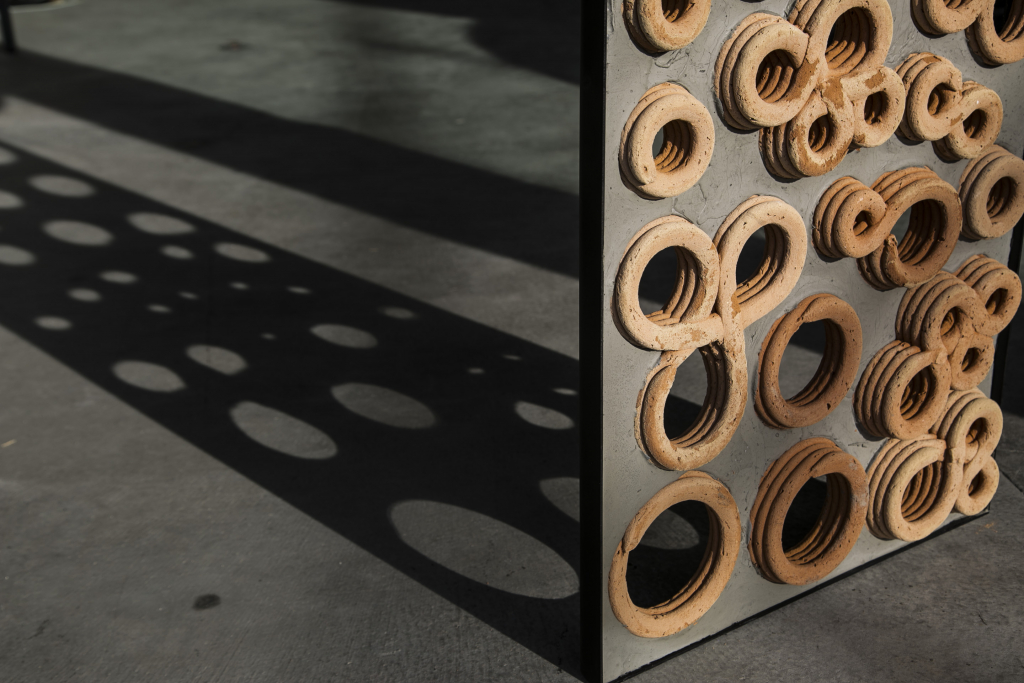3D printed facade screen panel of lightweight architectural elements from recycled inorganic solid waste turned into porous mineral foam.
Long description
The construction industry is going through a number of crises, including global warming and rapid population growth, leading to a crisis in the housing sector. It is time to rethink and question the way of making architecture and the materials we use. A particularly interesting group of materials in terms of their strength/weight ratio are foams. Despite their important role in industrial construction practice as insulators and lightweight materials, only brief investigations have been conducted. However, the recent development of highly porous mineral foams derived from abundant non-flammable and fully recyclable industrial wastes, that are very suitable for extrusion printing opens a new chapter for developing geometrically complex, novel lightweight building components with efficient formwork-free additive manufacturing digital fabrication processes. This project was based on studying the material and the manufacturing development of a larger investigation and systematically explored designs for small interlocking modules of mineral foam. The fabrication method is robotic 3D-extrusion-printing, and the printed elements were sintered in a furnace to achieve their full mechanical strength. As a final demonstrator, an ultralight screen façade was manufactured with mineral foam discrete elements and cast on UHPFRC Ultra-High-Performance Fibre concrete. Due to its geometry, they allow natural lighting and ventilation, highlighting the benefits of using this material to create lightweight, innovative, sustainable, and low-impact architectural elements in the built environment. Furthermore, this research discusses the challenges and limitations encountered during the project and offers a conclusive perspective for future research.








Please login or create a profile to view comments